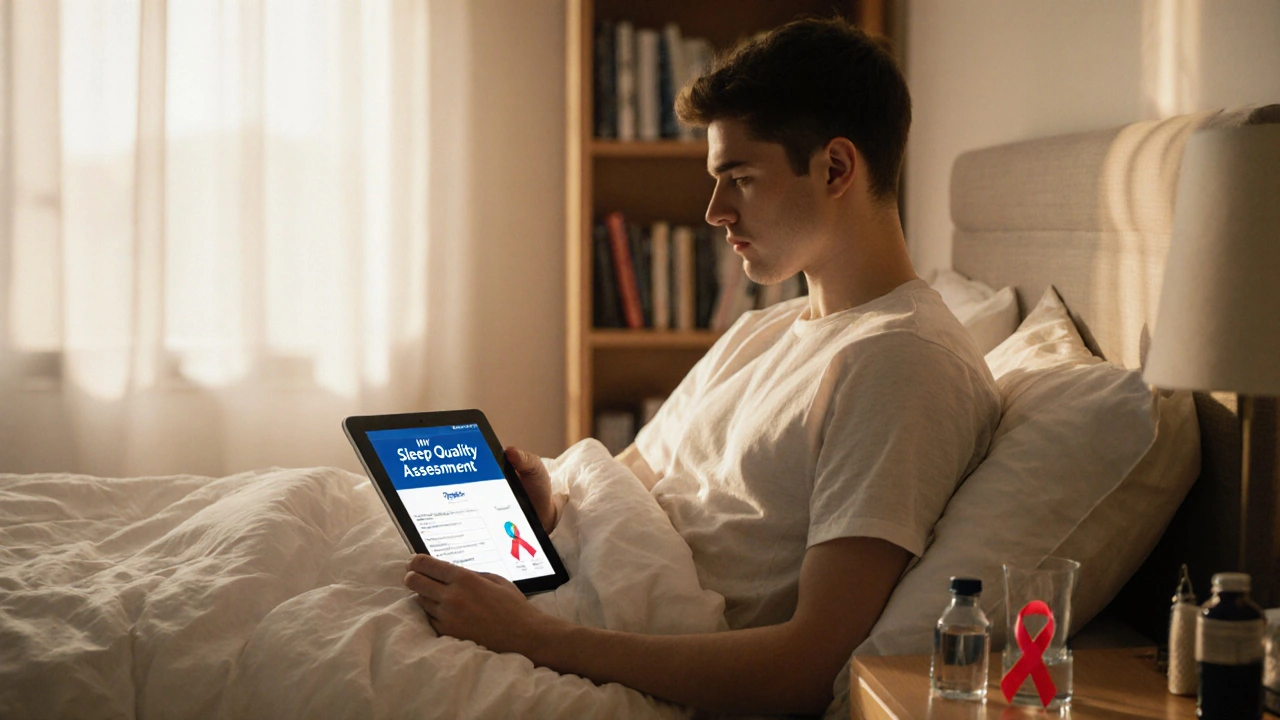HIV Sleep: What You Need to Know
When it comes to HIV sleep, understanding why rest feels out of reach is the first step toward better nights. HIV sleep, the sleep disturbances common among people living with HIV, ranging from difficulty falling asleep to frequent awakenings and non‑restorative rest. Also known as HIV‑related insomnia, it often intertwines with medication side effects, mental health, and overall health challenges.
One of the most frequent co‑players is Insomnia, a condition marked by trouble initiating or maintaining sleep. In the HIV community, insomnia doesn’t happen in a vacuum; it’s amplified by Antiretroviral therapy (ART), the drug regimens used to suppress HIV replication. Certain ART drugs can trigger vivid dreams, nighttime sweating, or hormonal shifts that push the body’s internal clock off balance. At the same time, the chronic fatigue that many patients report—often called HIV‑related fatigue, a persistent lack of energy that isn’t relieved by rest—feeds a vicious cycle: the more exhausted you feel, the harder it becomes to wind down, and the poorer the sleep, the deeper the fatigue.
Key Factors Behind HIV Sleep Disturbances
Beyond medication, mental health plays a huge role. Depression and anxiety, which are more prevalent in people living with HIV, can spike cortisol levels and keep the brain wired for alertness. Sleep hygiene—consistent bedtime, limiting screen exposure, and creating a cool, dark environment—becomes a practical countermeasure, but it often needs to be paired with targeted treatments. For example, cognitive‑behavioral therapy for insomnia (CBT‑I) has shown promise in reducing night‑time wakefulness without adding new drugs. Likewise, adjusting ART timing (taking doses earlier in the day) can lessen nighttime side effects for many patients.
Nutrition and physical activity also influence the sleep equation. Balanced meals rich in magnesium and B‑vitamins support the nervous system, while regular light‑to‑moderate exercise helps regulate the body’s circadian rhythm. However, over‑exertion close to bedtime can backfire, raising heart rate and body temperature just when you want to wind down. Finally, screening for other sleep‑related conditions—like obstructive sleep apnea, which is more common in the HIV population—ensures that underlying breathing problems aren’t masquerading as insomnia.
Putting these pieces together, HIV sleep issues stem from a web of factors: ART side effects, fatigue, mental health challenges, and lifestyle habits all intersect. Recognizing which thread is pulling the most weight in your own experience lets you target the right solution—whether that’s a medication tweak, a therapist referral, or a simple change to bedtime routine. Below, you’ll find a curated set of articles that dive deeper into each of these angles, offering practical tips, medical insights, and real‑world advice to help you reclaim restful nights.
Explore how HIV impacts sleep, why rest is vital for immune health, common sleep issues, and practical tips to improve rest for better well‑being.
